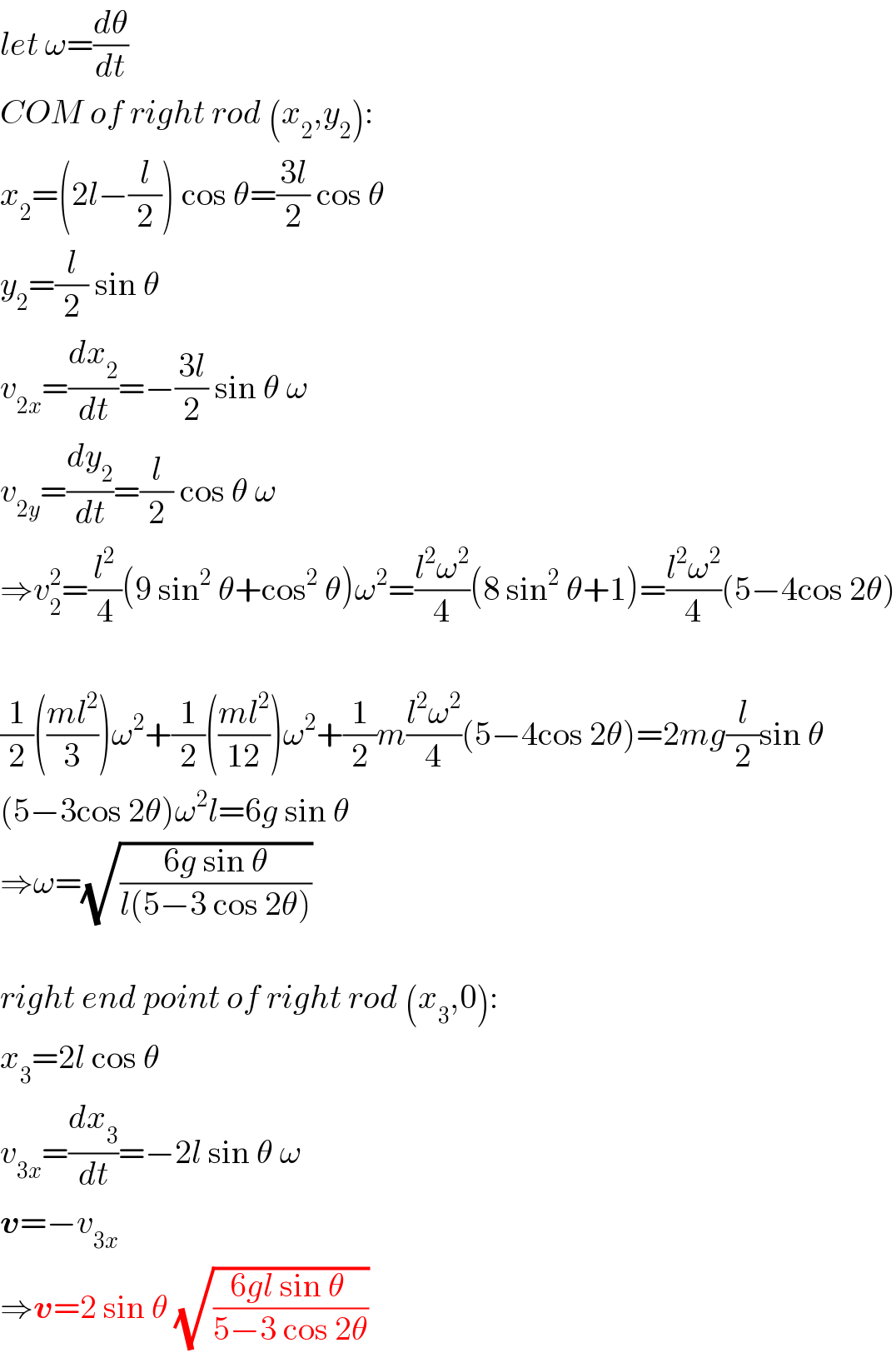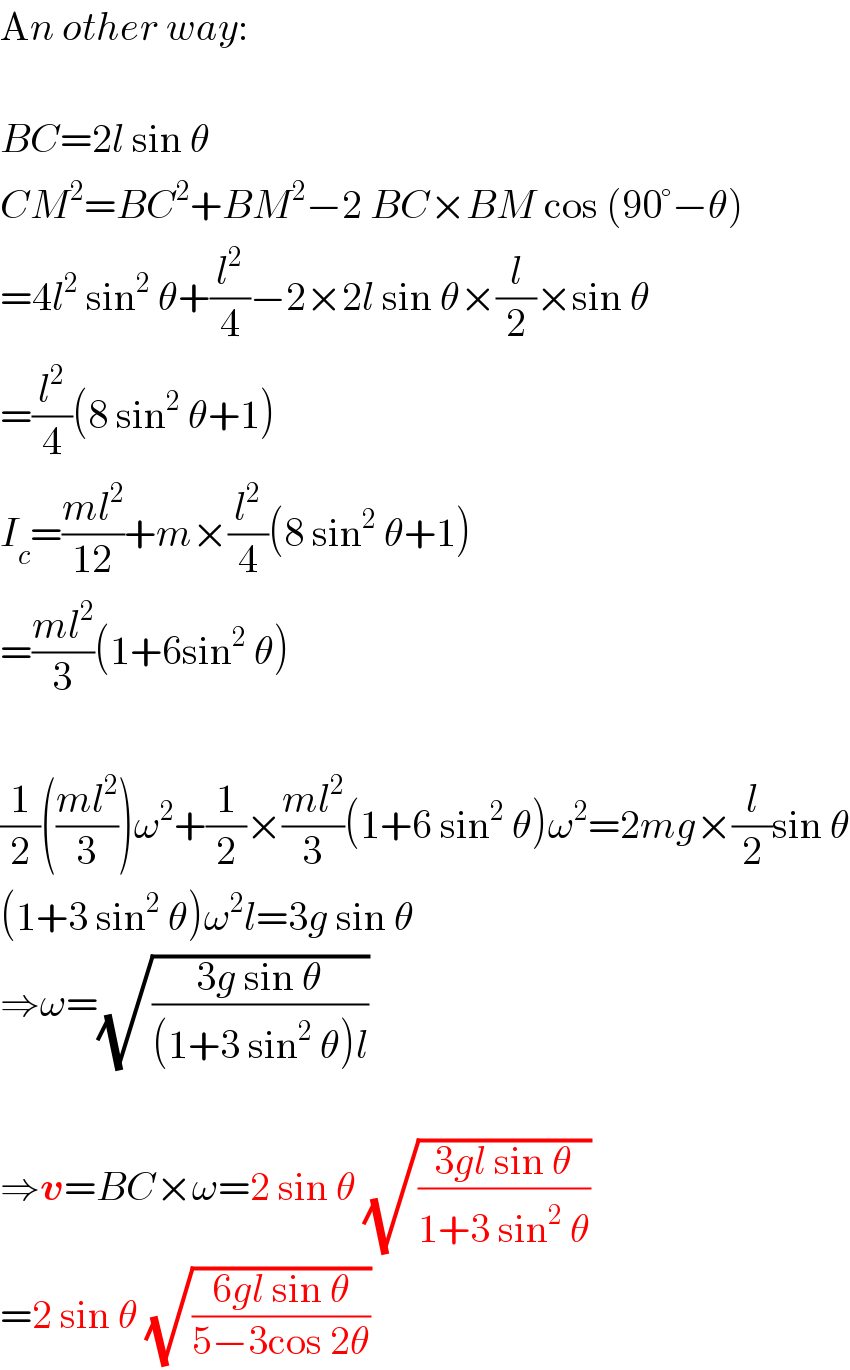
Question and Answers Forum
Question Number 41233 by ajfour last updated on 03/Aug/18

Commented by ajfour last updated on 03/Aug/18

Answered by MrW3 last updated on 04/Aug/18

Commented by ajfour last updated on 04/Aug/18

Commented by tanmay.chaudhury50@gmail.com last updated on 04/Aug/18

Commented by MrW3 last updated on 04/Aug/18

Answered by MrW3 last updated on 05/Aug/18

Commented by MrW3 last updated on 06/Aug/18

